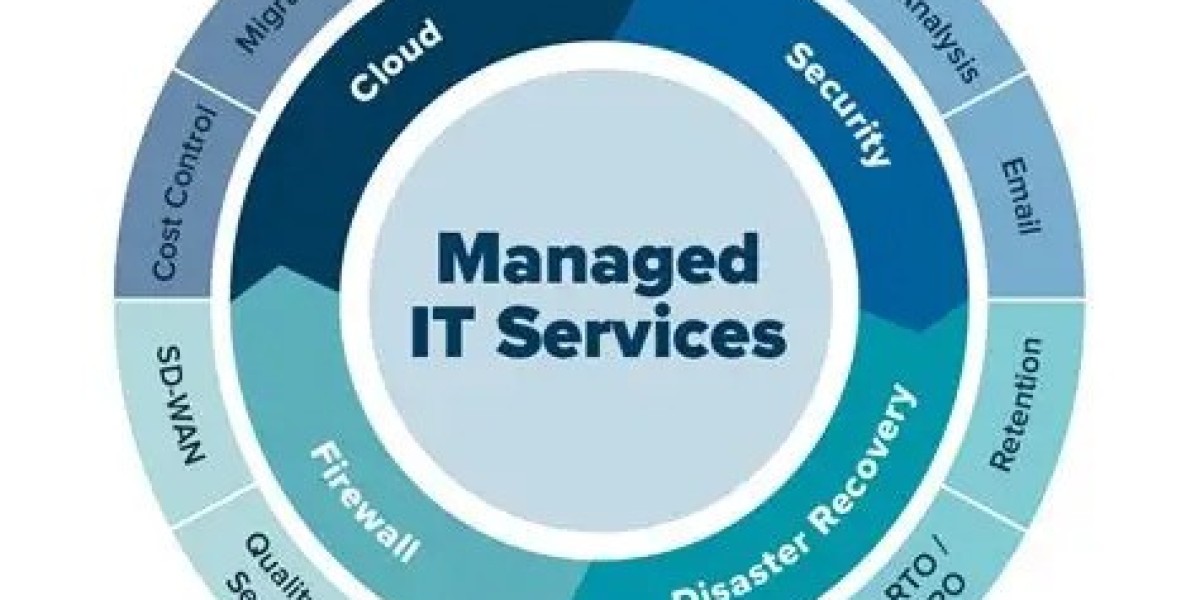Technology is now the backbone of modern education. From online learning platforms to digital classrooms, schools and universities rely heavily on IT systems to deliver lessons, manage operations, and support communication. However, maintaining these systems requires more than just basic technical knowledge — it calls for proactive management, cybersecurity, and scalability. That’s where Managed IT Services come in.
Managed IT Services empower the education sector by ensuring reliability, enhancing learning outcomes, improving security, and optimizing costs — allowing educators to focus on teaching rather than technology.
1. Enhancing Classroom Learning Through Reliable Technology
In today’s classrooms, learning depends on digital tools — smartboards, tablets, projectors, and cloud-based platforms. When technology fails, lessons are disrupted, and productivity drops. Managed IT providers ensure these systems run smoothly by offering 24/7 monitoring, regular updates, and rapid issue resolution.
For example, when a school’s Wi-Fi fails during an online exam or virtual class, managed service providers (MSPs) can detect the problem in real time, fix it remotely, and minimize downtime. They also handle preventive maintenance — updating firmware, managing bandwidth, and ensuring compatibility across devices — so teachers can trust their tools will work when needed most.
2. Strengthening Cybersecurity and Data Protection
Educational institutions handle vast amounts of sensitive data: student records, financial details, staff credentials, and research material. Unfortunately, this makes them prime targets for cyberattacks. In fact, ransomware attacks on schools have increased significantly in recent years.
Managed IT Services play a vital role in protecting this information. They deploy multi-layered security strategies — including firewalls, endpoint protection, and continuous monitoring — to detect and prevent intrusions before they cause harm.
Beyond technology, MSPs also implement data backup and disaster recovery plans, ensuring that even in the event of a breach or system failure, information can be restored quickly. They help schools comply with regulations like FERPA (Family Educational Rights and Privacy Act) or GDPR, safeguarding student privacy and institutional reputation.
3. Enabling Remote and Hybrid Learning
The COVID-19 pandemic highlighted the importance of flexibility in education. Schools that had strong IT infrastructures were able to transition to remote and hybrid learning more easily. Managed IT Services continue to support this new normal by maintaining robust cloud systems, video conferencing platforms, and secure remote access for students and teachers.
With managed support, institutions can scale resources up or down depending on need — such as increasing server capacity during exam season or deploying virtual desktops for remote learners. This adaptability not only enhances learning continuity but also prepares institutions for future disruptions.
4. Improving Operational Efficiency and Cost Management
Hiring an in-house IT team to handle every technical issue can be costly and inefficient. Managed IT Services provide a more economical alternative by offering access to a full team of experts for a predictable monthly fee.
This subscription-based model allows schools to convert unpredictable IT expenses into manageable operating costs. MSPs handle everything from network management to hardware procurement and vendor coordination, reducing the administrative burden on school staff.
Moreover, by using automation tools, they can optimize network performance and energy use — helping institutions save both money and resources while meeting sustainability goals.
5. Supporting Faculty and Student Productivity
Managed IT Services don’t just maintain infrastructure — they enhance productivity for everyone on campus. MSPs provide reliable helpdesk support to resolve login issues, software errors, or device malfunctions quickly. They also offer training sessions and user guides to help educators make the most of learning management systems (LMS), digital grading tools, and collaboration platforms.
By ensuring that systems are always functional and secure, MSPs help create an environment where students and faculty can focus on learning and innovation instead of troubleshooting technology problems.
6. Facilitating Data-Driven Decision-Making
Education today is increasingly data-driven. Schools track performance metrics, attendance patterns, and resource utilization to make informed decisions. Managed IT Services assist in collecting, storing, and analyzing this data through integrated platforms and secure databases.
They can help set up dashboards that visualize insights — such as student engagement levels or device usage trends — enabling administrators to allocate resources efficiently and improve learning outcomes. When technology is managed effectively, decision-making becomes faster, smarter, and more strategic.
7. Ensuring Scalability and Future-Ready IT Infrastructure
As institutions grow or adopt new digital initiatives, their IT needs evolve. Managed IT providers design scalable infrastructures that support long-term growth — from expanding Wi-Fi coverage to integrating AI-powered learning tools.
They also help schools migrate to the cloud, enabling easy access to data and applications from any device, anywhere. This scalability ensures that technology never becomes a bottleneck for progress, allowing educational institutions to remain agile and future-ready.
8. Promoting Equity and Accessibility in Education
Technology can bridge gaps in learning — but only if it’s accessible and reliable for everyone. Managed IT Services help schools deploy inclusive technology solutions such as assistive devices, adaptive software, and accessible e-learning platforms.
By ensuring consistent connectivity and support across campuses, MSPs make digital learning more inclusive for students with disabilities or those in remote areas. This empowers schools to fulfill their mission of providing equal educational opportunities for all.
Conclusion
Managed IT Services are no longer a luxury — they’re a necessity for the modern education sector. By ensuring secure, reliable, and scalable IT systems, MSPs empower schools and universities to focus on their core mission: delivering quality education.
From protecting sensitive data to supporting hybrid learning and improving operational efficiency, managed IT partners act as the invisible force behind educational excellence. As technology continues to shape how we teach and learn, schools that embrace managed IT solutions will be best positioned to thrive in the digital age.








